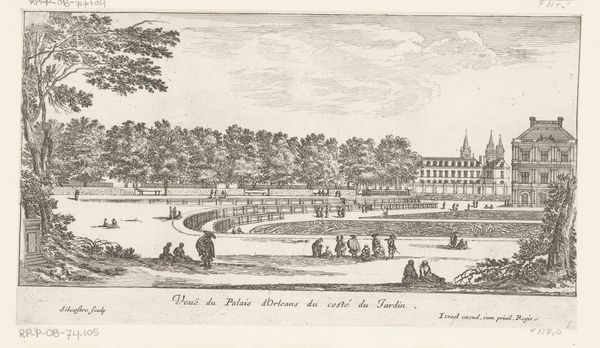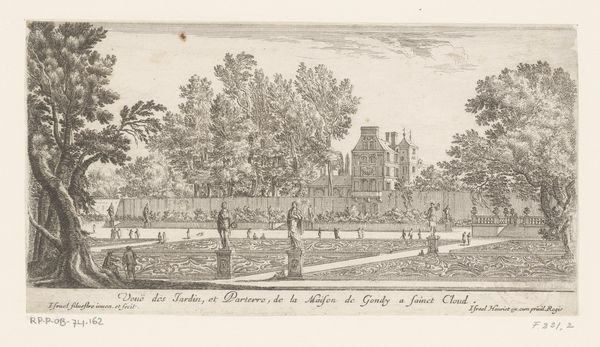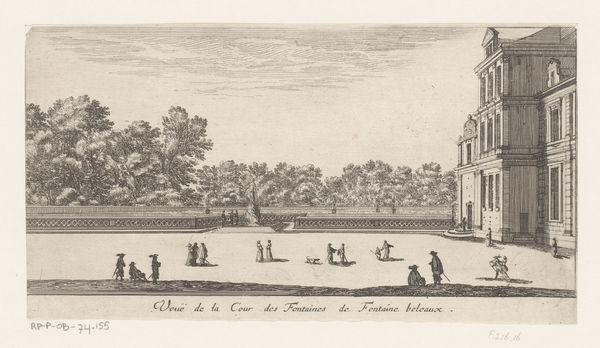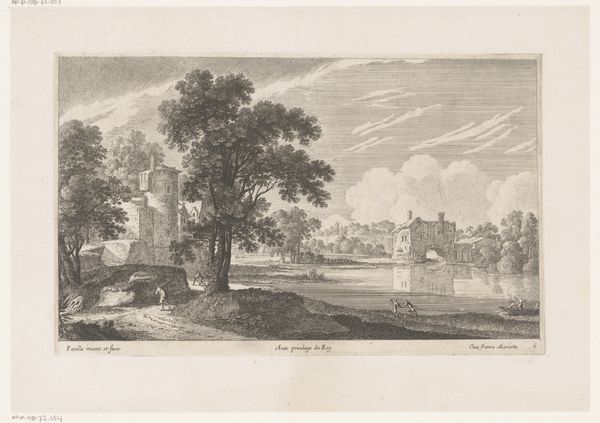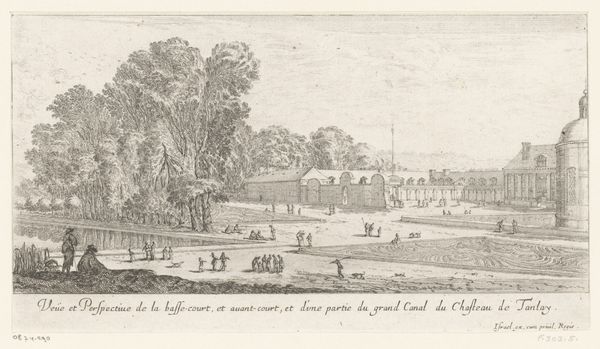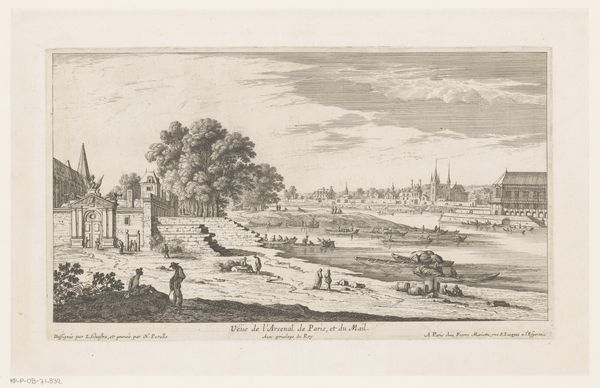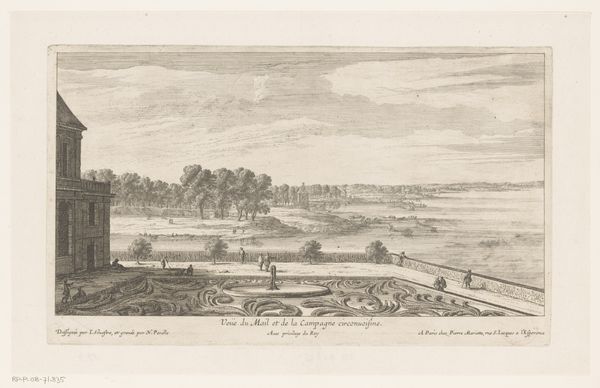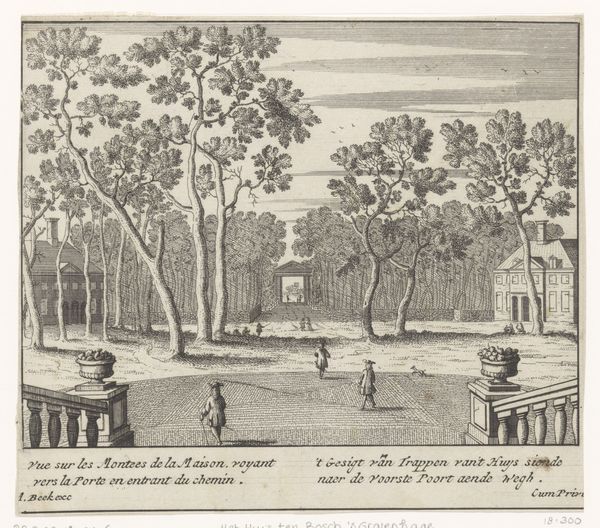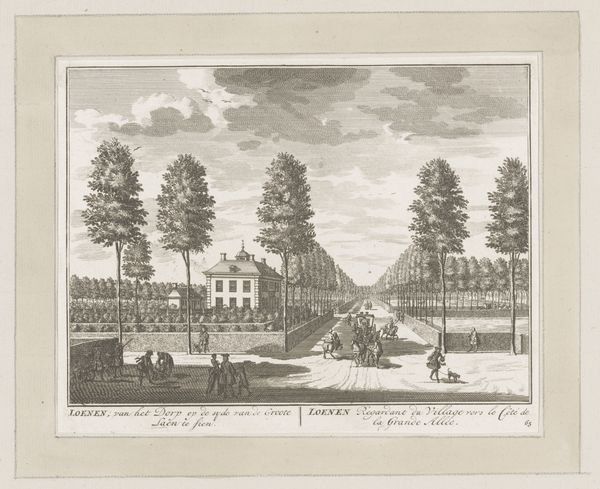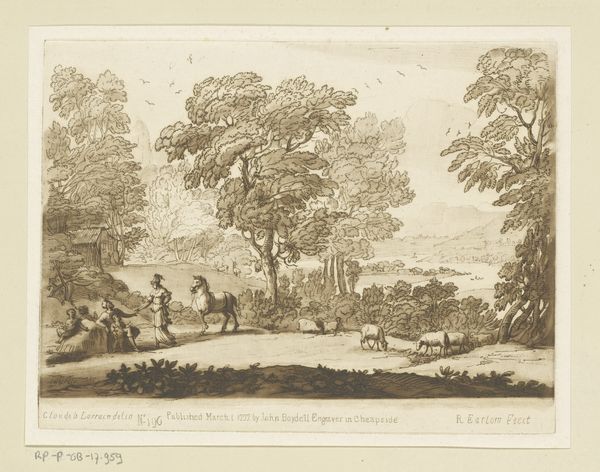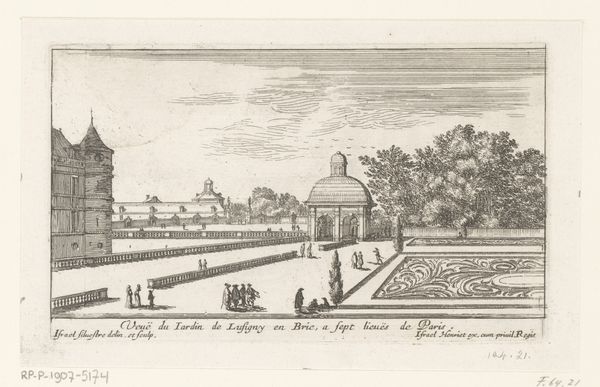
#
mechanical pen drawing
#
pen sketch
#
old engraving style
#
sketch book
#
personal sketchbook
#
sketchwork
#
pen-ink sketch
#
pen work
#
sketchbook drawing
#
storyboard and sketchbook work
Dimensions: height 132 mm, width 237 mm
Copyright: Rijks Museum: Open Domain
This print of the Palais du Luxembourg was made by Israel Silvestre in the 17th century. The printmaking process is critical to understanding its social significance. Silvestre would have started by sketching the palace. Then, using a sharp tool called a burin, he would have painstakingly engraved this image into a copper plate. The density of the lines determined the areas of light and dark, demanding an intimate understanding of tone. Ink was then applied to the plate and wiped off, remaining only in the engraved lines. Finally, the plate was pressed onto paper, transferring the image. This was a laborious, skilled tradition, which allowed for the mass production of images. Prints like these democratized access to art and information. They also shaped perceptions of architecture, disseminating images of power and prestige to a wider audience. So, next time you see a print, remember the work involved in its making, and the expanded world it helped to create.
Comments
No comments
Be the first to comment and join the conversation on the ultimate creative platform.
